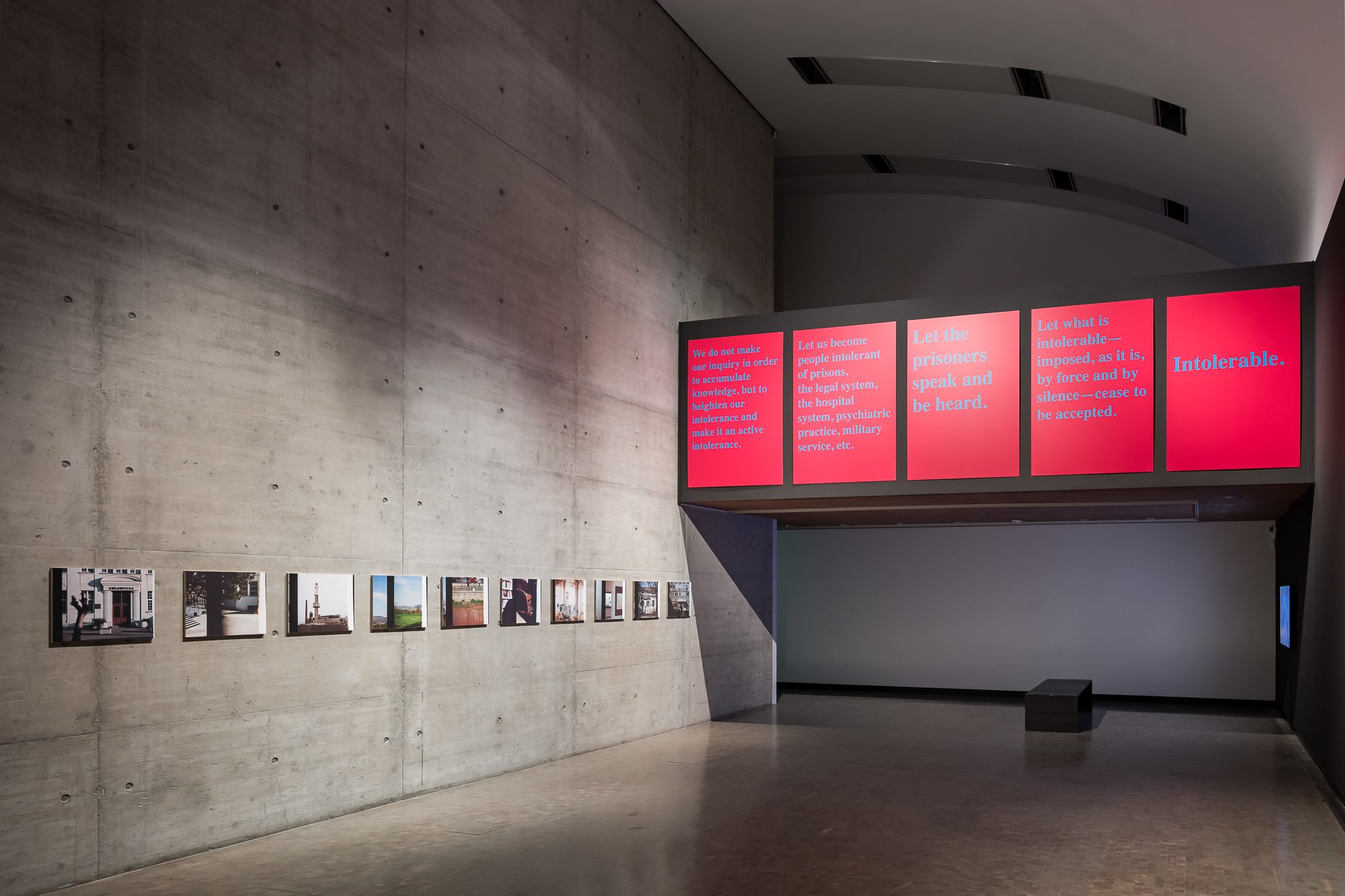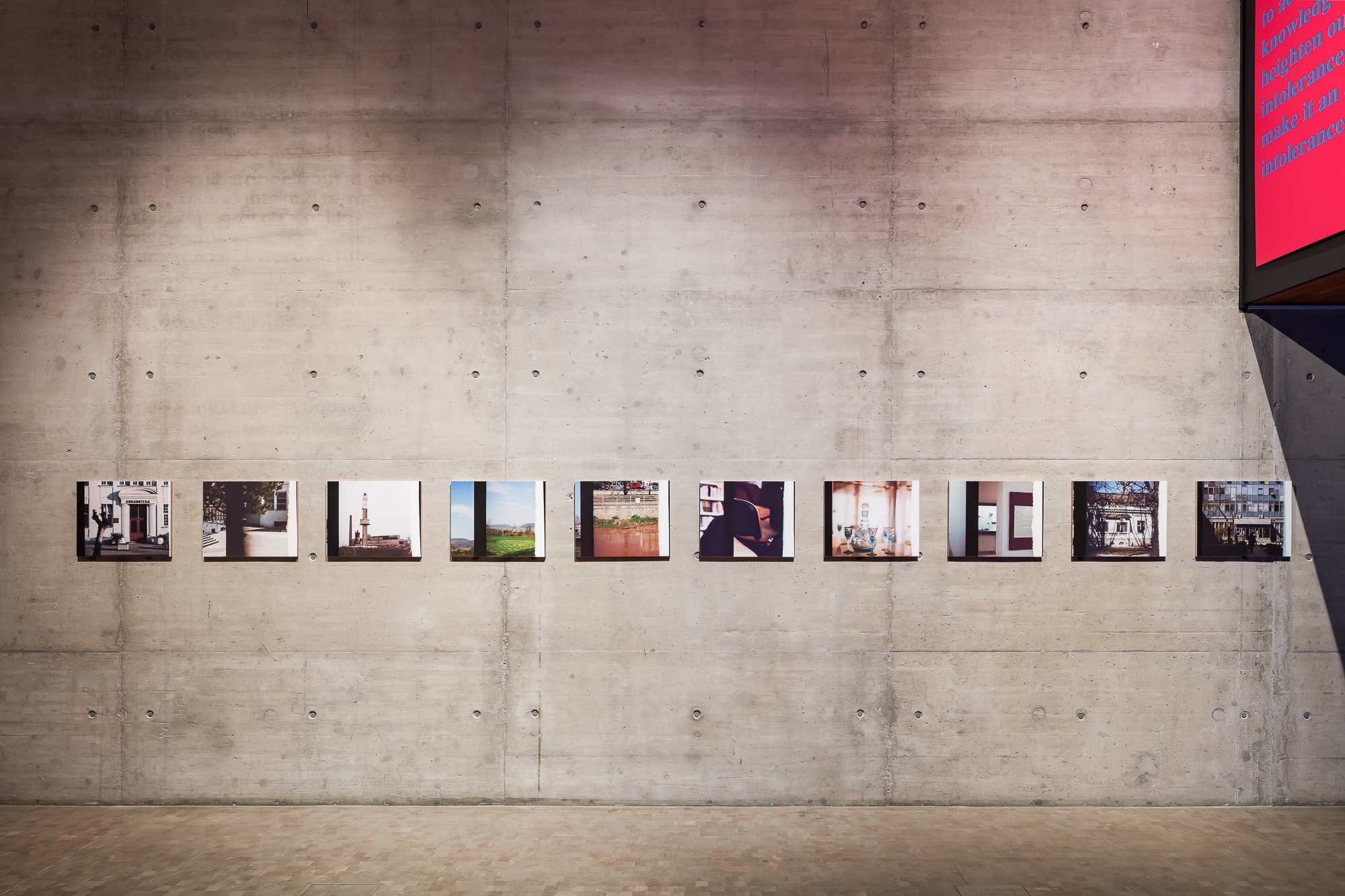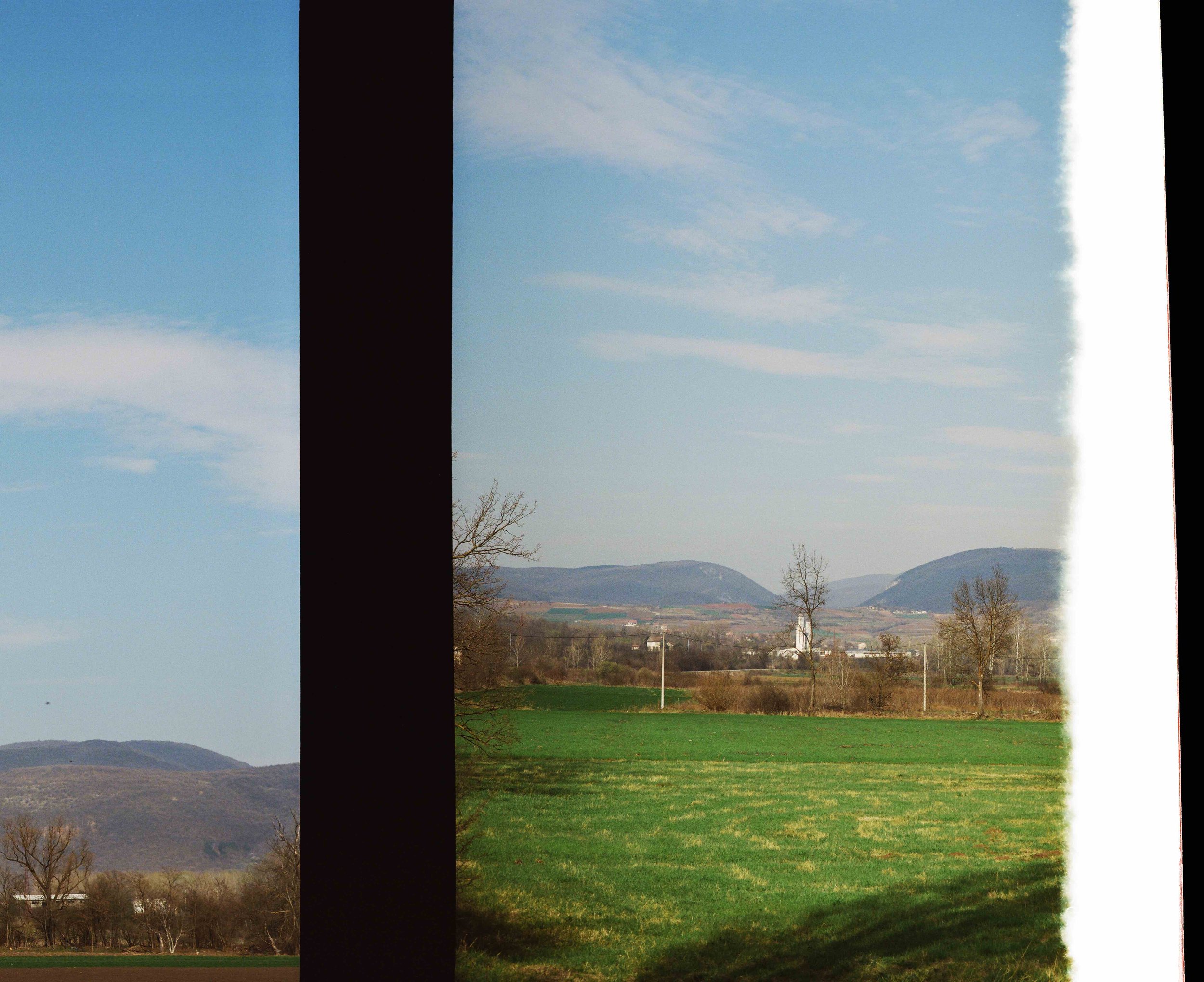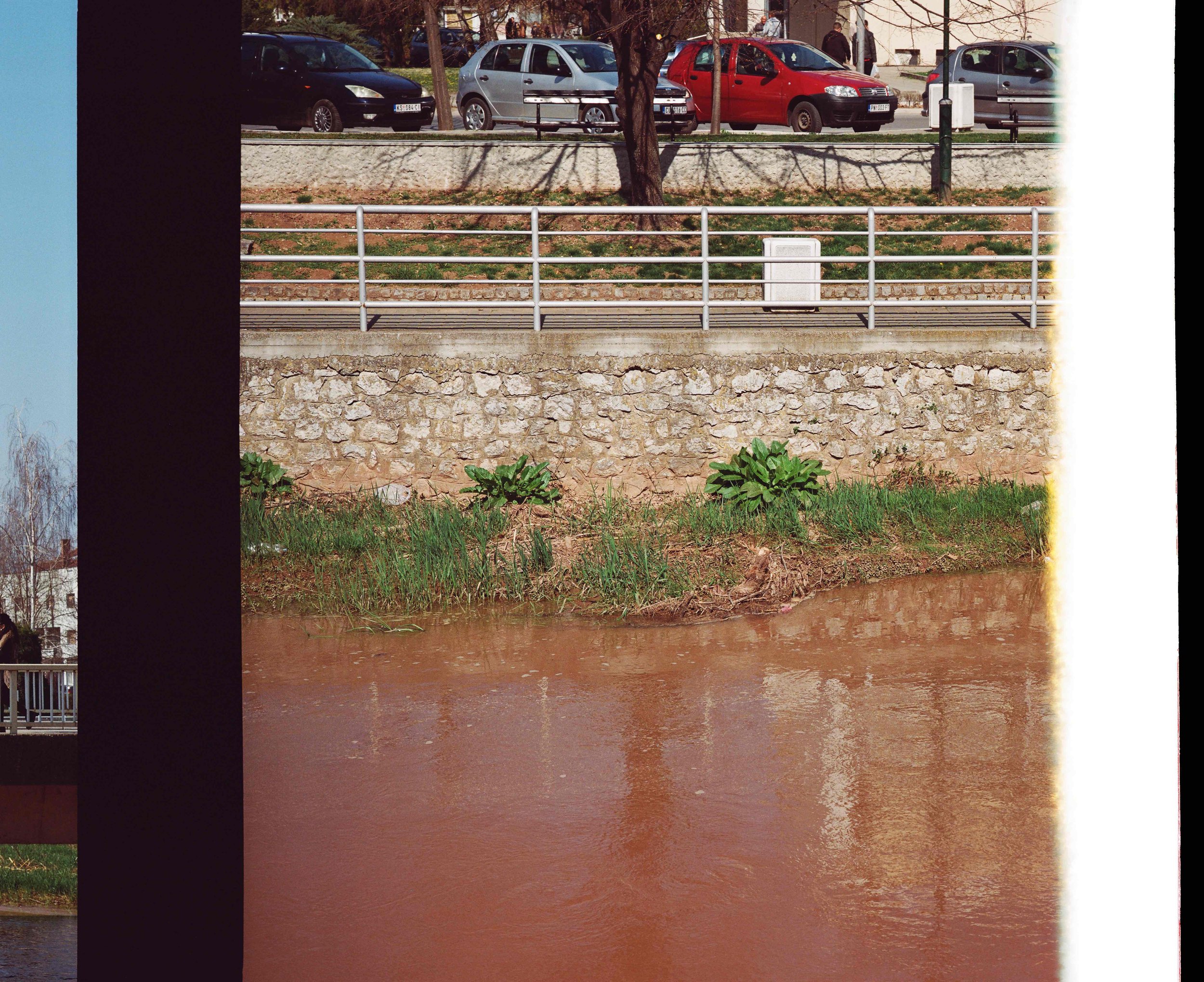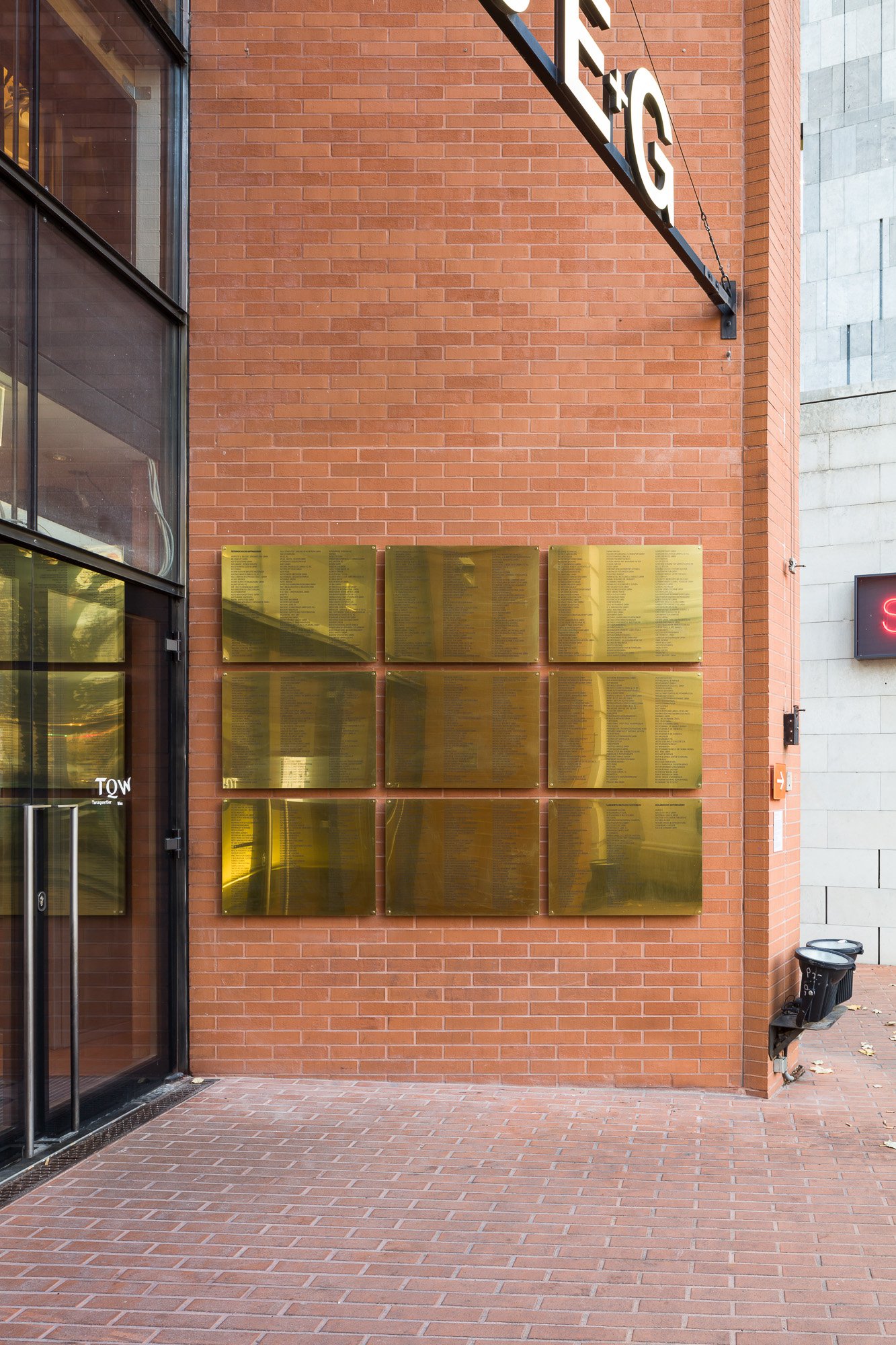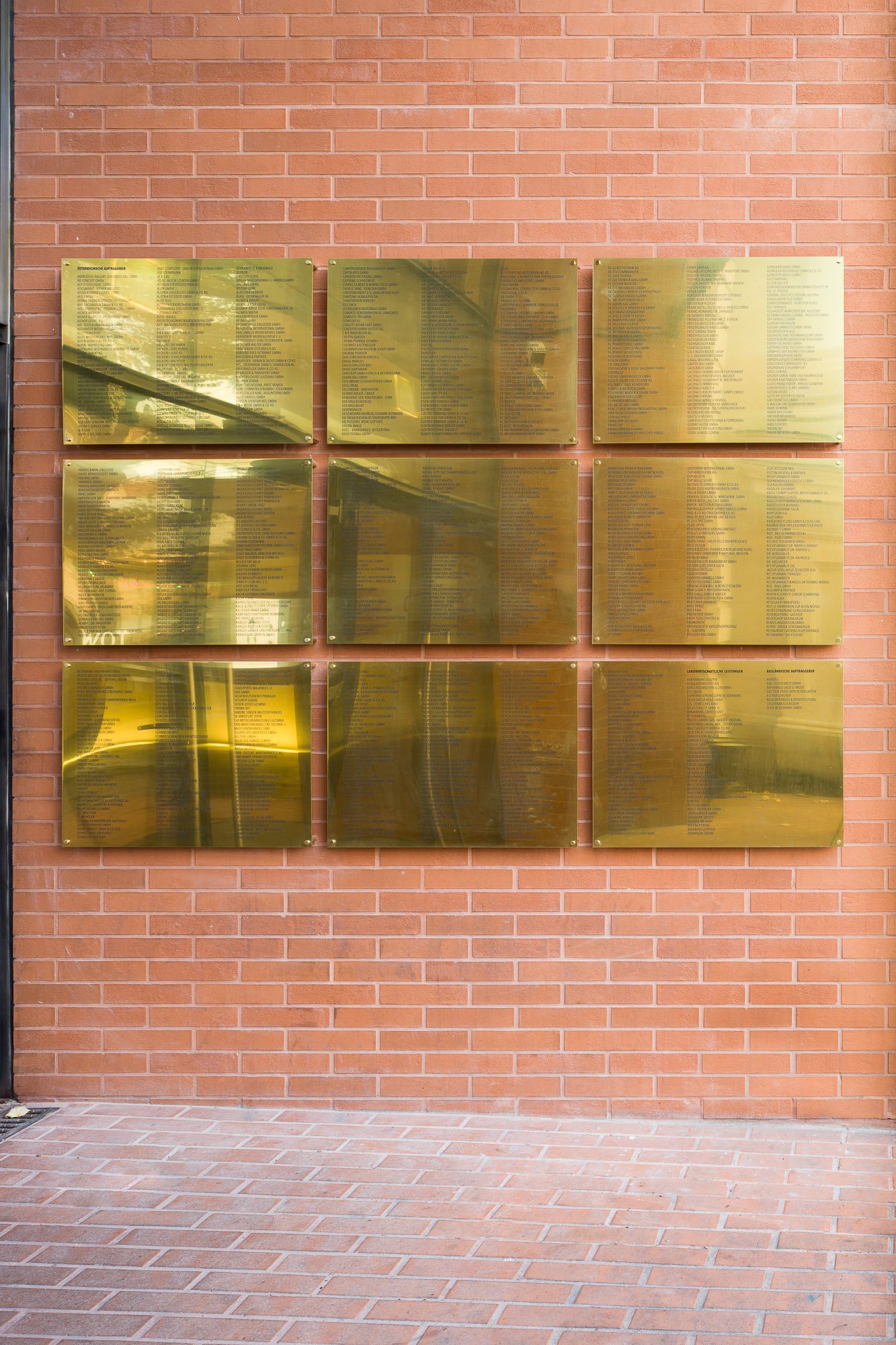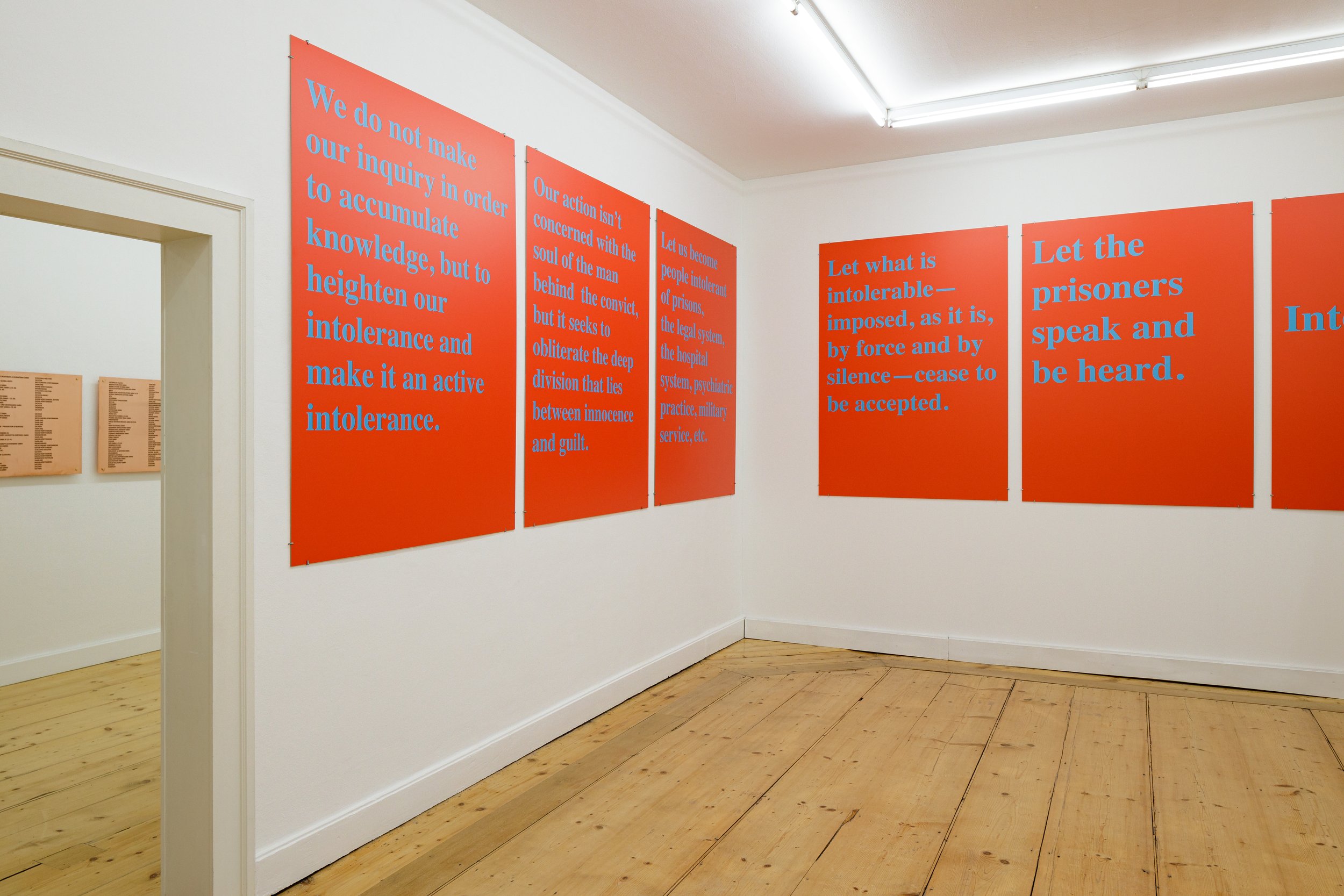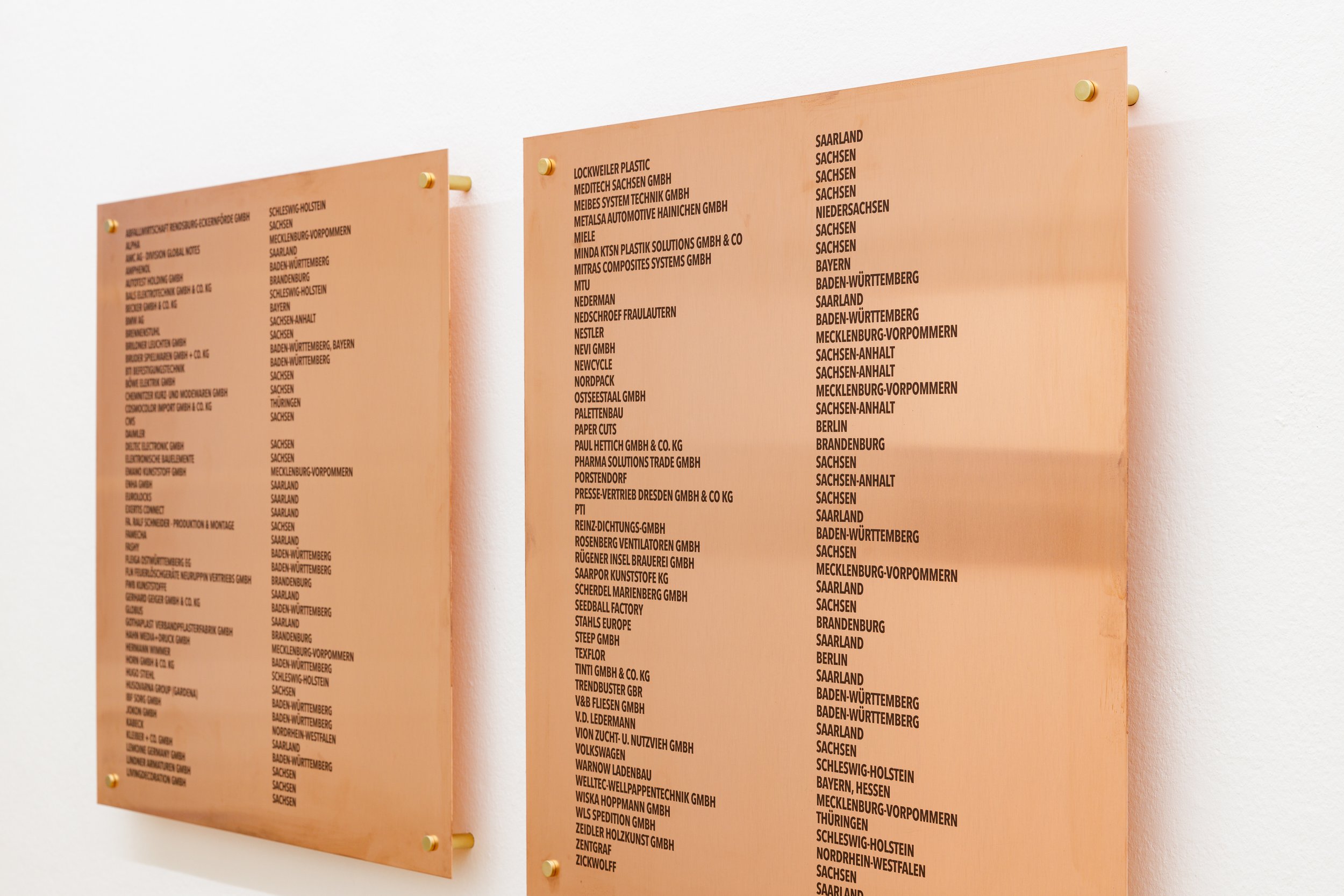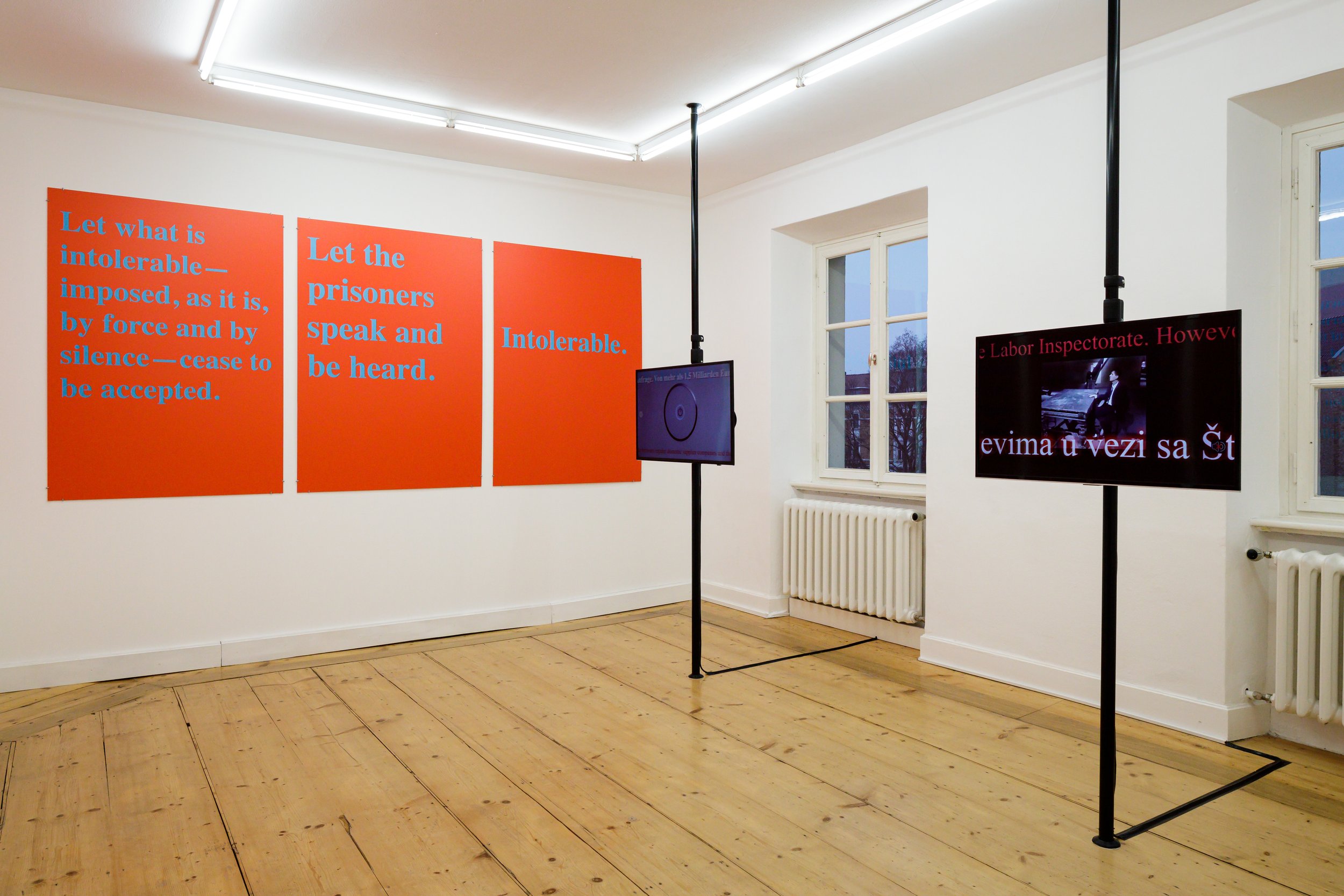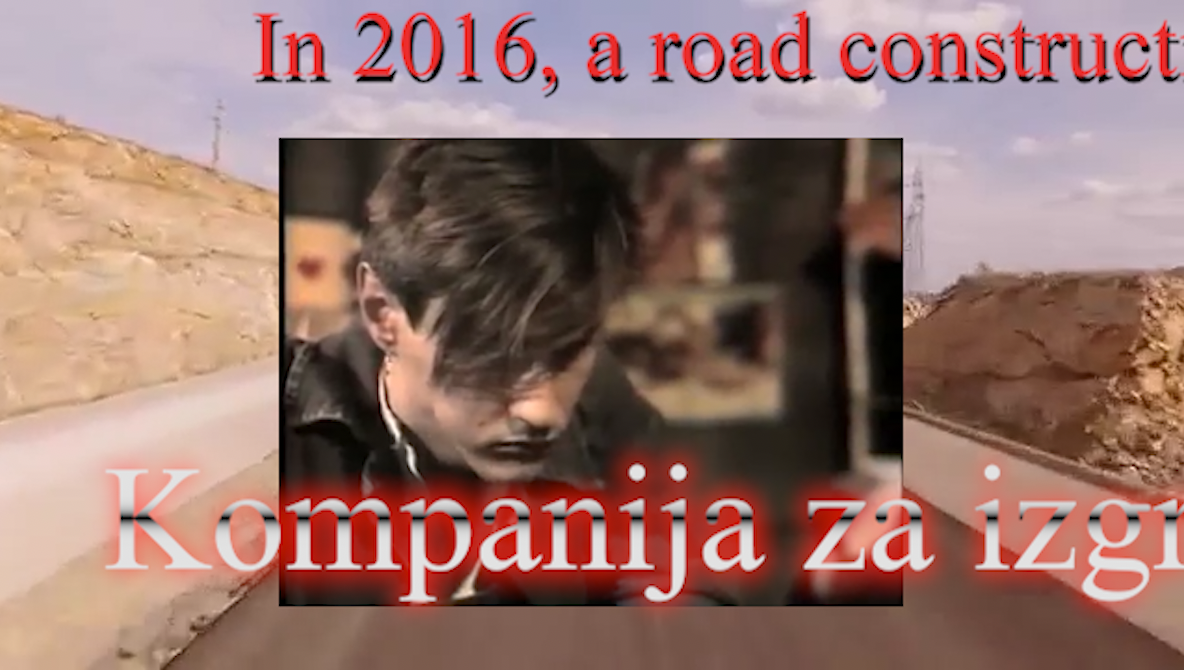Active Intolerance
Two-part installation
PART I
9 brass plates, each 90 x 60 cm, dimensions variable (outside exhibition space, located in Museumsquartier at the entrance to Hall E+G)
PART II
6 A0 posters, each 118.2 x 168 cm ; 10 Fine Art prints on Hahnemühle paper; video, color, 16:9, 11 min 50 sec
Active Intolerance – Part II, is made up of three components. A series of six posters feature, in blue text on a red background, sentences selected from the manifesto of the Prisons Information Group, such as: “Let what is intolerable—imposed, as it is, by force and by silence— cease to be accepted” and “Let us become people intolerant of prisons, the legal system, the hospital system, psychiatric practice, military service, etc.” Established in 1970 by philosopher Michel Foucault in collaboration with writer Jean-Marie Domenach and historian Pierre Vidal-Naquet (and later on joined by fellow intellectuals Gilles Deleuze, Jean Genet, and Jean-Paul Sartre), the Prisons Information Group aimed to disseminate information about the conditions of French prisons in order to trigger a public response against the intolerable conditions in which prisoners were forced to live (and work) and, ultimately, calling for change. The group undertook intensive field research by interviewing prisoners, their wives, and prisons guards, and they then distributed the information they had gathered via samizdat pamphlets.
Alongside the six posters, a photographic series by Ana Hoffner ex-Prvulovic* documents the abandoned state of factories and institutions in her* hometown of Paraćin, Serbia. The overexposed edges appearing on some pictures and characteristic of analog technique, as well as the play with superimpositions, transparencies, and reflections, and the intense printed colors, prevent the series from falling into pure nostalgia. Once a dynamic socialist city with its four factories (for glass, textile, sugar, and cement production) and its social and cultural institutions, Paraćin now has only one factory remaining in international business. This factory, the cement one (today CRH), cooperates with Strabag—an Austrian construction company massively investing in Southeast Europe and exploiting its local labor force through prison labor. This is the link to the last part of the work, a video without sound, which merges two types of imagery. One layer shows contemporary corporate sequences by Strabag, from general communications to a specific advertisement for one of its development/gentrification projects, Belgrade Waterfront. This imagery is interlaced with muted video clips of EKV (for Ekatarina Velika, Catherine the Great), a famous alternative punk rock band from Belgrade. By interweaving these images, the artist* shows the discrepancy between the socialist model of self-organized (art) production and neoliberal, imperialist forms of production. Finally, a line of text that runs at the bottom of the screen throughout the video features a translated and slightly shortened version of an investigative article on the illegal and inhumane use of prison workers on highway construction sites, among other illegal entanglements.
Active Intolerance – Part I is displayed outside the exhibition space, at the entrance to Halle E+G in Museumsquartier. The installation deals more specifically with the local situation of prison workers in Austria. Many everyday products are made by inmates, who receive low wages and have no possibility to organize in trade unions. As such, they remain unbearably invisible. Ana Hoffner ex-Prvulovic* tackles this invisibility by disclosing the full list of Austrian companies using prison labor, as revealed in a 2018 document published by the Ministry of Justice. Just months later, the list was withdrawn from the ministry’s website. An outdoor installation consisting of nine printed brass plates placed at the entrance to Kunsthalle Wien, the work can be seen as an (anti-)monument, in negative, reminding viewers of the silenced and extensive use of prison labor.
Text by Anne Faucheret

